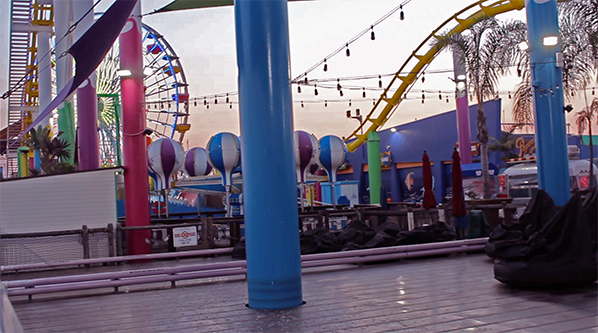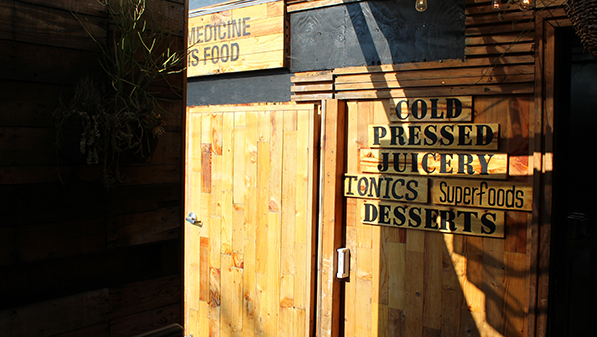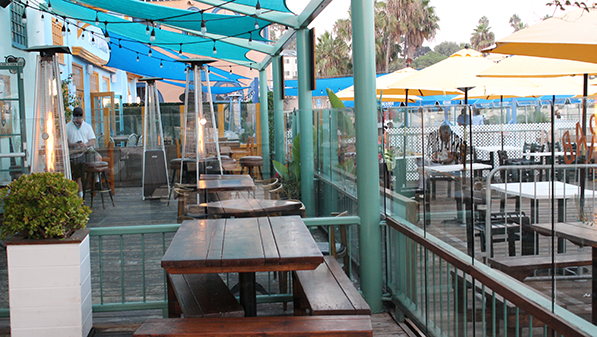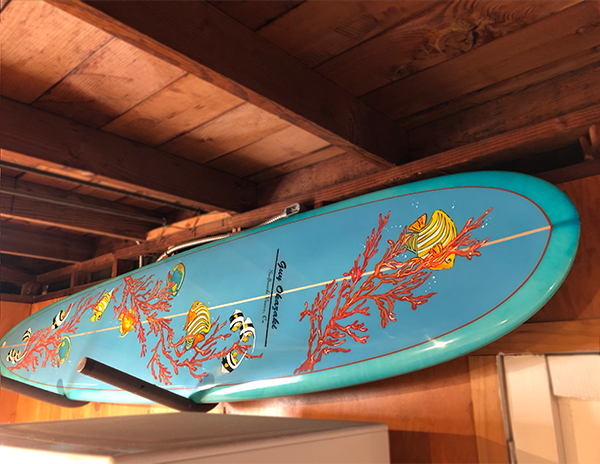
Vibrant sounds of game mechanics and laughter waft from the colorful scene. As the roller coaster speeds by with a woosh, a warm, churro-scented breeze dances through the salty air.
The distant echo of past summer nights now haunts the empty Santa Monica pier.
Locally owned businesses in the city of Santa Monica are struggling to fight off COVID-19 and the city government is trying to help. Small businesses make up the majority of businesses in Santa Monica, said Jennifer Taylor, economic development manager for the city.
“Nationally we’re hearing statistics that as many as 25% of businesses might not survive this,” Taylor said. “So one in four businesses.”
The city has offered local businesses financial flexibility on rent, free zoning permits for outdoor dining and Pepperdine mediation services. Tourist-dependent businesses are in financial danger. The pier’s Pacific Park amusement park, historic carousel and Playland arcade are all closed due to health reasons related to the pandemic.
Small businesses in Santa Monica
A small business is considered a business that does not exceed $6 million in average revenue annually, according to the U.S. Small Business Administration, or SBA. Most businesses in Santa Monica fit this definition, Taylor said.
This includes local businesses like Kreation cafe on Montana Avenue, as well as most of the businesses on the pier, like the Albright restaurant and the Playland Arcade. Los Angeles County issued an emergency shutdown order in March that forced the pier to close for months.
“Playland Arcade, that’s a longtime family-owned business on the pier, unfortunately, they’re not able to reopen right now,” Taylor said. “Just because those are all very high-touch types of activities. However, the Pacific Park concessions are still open.”
Other high-contact activities such as the historic carousel on the pier, as well as the world-famous Ferris wheel, will remain closed. Taylor said there is not a date in place for any of the pier’s attractions to reopen.
The owners of the arcade, managers of the Pacific Park, and the Santa Monica pier carousel all declined to comment on the current state of their businesses. Many other small businesses in the city, such as the family-owned coffee shop Primo Passo Coffee Company on Montana Avenue and The Bike Shop on Main Street, similarly declined comment.
Another family-owned store, the Albright, was able to open under strict regulations. Since the reopening in June, General Manager Tim Smith said pier tourism and the Albright’s sales have been below 50% of the summer norm.
“We will not make up that revenue lost,” Smith said.
Other small businesses in Santa Monica are having the same struggles. Frank D’Andrea, operations manager for all the Kreation cafes in West Los Angeles, said they had to transition their shop online in order to stay in business.

“Sales went down in the beginning significantly,” D’Andrea said. “We have 19 stores, that’s 19 rents. We have over 400 employees. It was very scary in the beginning.”
Restaurants can remain open as long as there is outdoor seating that maintains a 6-foot distance between tables, according to the Santa Monica reopening regulations. Indoor services, such as nail salons, may resume business inside starting in October but only at 25% capacity.
“Outdoor dining just seems to be the way to go in the future,” D’Andrea said. “Anyone who opens up a restaurant from here on out is going to only open if they have some form of outdoor dining.”
How Santa Monica is helping small businesses right now
Santa Monica is trying to ease the economic blow by offering local businesses temporary use permits that allow them to use city-owned property, Taylor said. Some 400 businesses have applied for these permits so far and have extended their stores onto parklets and parking lots.
“We have also adopted an interim zoning ordinance,” Taylor said. “So that’s a planning tool for zoning to help businesses to expand operations quickly. It’s helping with allowing businesses to sell alcohol. In the past there was a pretty lengthy and costly alcohol permit process. If a new business wanted to open and wanted to apply for alcohol they would have to get a conditional use permit. It took a long time to get it and it cost upwards of $20,000 to get a permit.”

Kreation cafe, the Albright, and hundreds of other local businesses have taken advantage of the opportunity to extend their businesses.
“There are restaurants who have no outdoor seating,” D’Andrea said. “So the sidewalk and the parklet are their only options.”
Taylor said the recent flexibility the city has had with small businesses has actually attracted 250 new businesses to Santa Monica, with 150 businesses in the approval process. Along with the new leniency with zoning ordinances, the city has also implemented an eviction moratorium that allows businesses to defer rent until the start of 2021.
“The deferment program here is in place for small businesses through December. Then they’ll start having to pay back rent in January and they’ll have until June to repay,” Taylor said. “But then they’ll also be required to pay their whole monthly rent, so I think January is when we’ll start to see more impact of closures.”
It is difficult to measure the rate at which local businesses are closing due to the moratorium, Taylor said. At this time 70 businesses have officially closed, but Taylor projects many more to close come the first of the year when they are required to start paying back their deferred rent.
Santa Monica has also collaborated with the Pepperdine University Straus Institute for Dispute Resolution for mediation services. Strauss Managing Director Sukhsimranjit Singhsaid he heard Santa Monica was in need of mediation services but did not have the budget.
Taylor said the city offers tenants and landlords these free meditations to help landlords and tenants navigate the rent deferment and eviction moratorium programs that are in place citywide, according to the Santa Monica City’s official website. Students and alumni of the Straus Institute lead the free mediation services.
“There is so much stress on society right now because of COVID; we know there are people who can’t make their rent,” Singh said. “Landlords are also feeling the heat because they aren’t getting the rent. So it is difficult throughout.”
Mediators are neutral, third parties who assist two or more people to reach a resolution outside of court. The process is cheaper and faster than going to court and helps preserve relationships, Singh said. The Straus Institute may offer these services to Beverly Hills next.
“I think it is a collaboration in the right direction, we are very pleased with it: I am looking at other city governments,” Singh said. “It is a perfect time to help people and this is our way of helping people.”
Safety first
Santa Monica has created a program that allows local businesses to become certified in the Santa Monica Shines safety pledge. This pledge awards participating businesses a seal that verifies they passed health inspections and abides by the LA County’s guidelines for customer and employee safety.
“We have our Santa Monica Shines,” Smith said. “Which is a COVID assurance program Santa Monica is doing. We’re the very first business that signed up, we’re the first business that got our seal.”
D’Andrea said Kreation cafe requires their employees to take their temperatures before each shift, wear face masks, shields and gloves at all times.
Smith said the Albright must adhere to these rules as well.
Surf shops are staying afloat amongst the chaos

With gyms being closed and indoor activities shut down, surfing is busier than it’s been for close to a decade, former professional surfer Guy Okazaki said. Okazaki owns his own surfboard company called Guy Okazaki Surfboards based in Venice, and many of his vendors are Santa Monica based surf shops.
“There’s no sign of it decreasing because normally this time of year schools are open again, kids are back to school, summer is over, people are in work, so the beaches are empty and people aren’t surfing as much,” Okazaki said. “But that doesn’t seem to be the case because I guess gyms are still closed and people still want to get exercise and surfing is a healthy activity.”
He has experienced an increase in custom surfboard orders since the pandemic started but is having trouble keeping up with the increased demand, Okazaki said. Many of his employees have decided not to work for fear of catching COVID-19.
“We’d thought we’d seen it all, heard it all,” Okazaki said. “Just when you think you’ve got life figured out, life throws you 2020.”
How to help support small businesses
Local businesses are barely staying afloat right now, and Taylor said patronage and feedback are the two most important ways to help small businesses withstand the storm. Supporting the community comes in many forms, but choosing to shop at the local store rather than a large chain is a good place to start, Taylor said.
“The country is not working together,” D’Andrea said. “Your local communities are still working together.”
The Santa Monica pier is vacant of international tourism at this time due to the U.S. travel bans. This is a perfect opportunity for residents and members of the surrounding communities to visit the pier and avoid the usual crowd, Taylor said.
“There’s still plenty of Pokemon here to catch,” Smith said. “Come on down, catch some Pokemon.”
The Albright and Kreation are just two of the many small businesses local to the Santa Monica area. Taylor said to visit them and explore the unique stores around the community.
Stores are learning how to navigate e-commerce. Taylor said the positive feedback can go a long way right now for small businesses trying to make it.Santa Monica holds city-wide events such as scavenger hunts where participating businesses offer prizes such as restaurant gift cards and free hotel rooms for the winners. There are plans in place for a drive-in movie experience in the parking lot of the pier, as well as other pandemic-friendly city-wide events.
Jasmine “Jaz” Thomas completed the reporting for this story in Jour 241 in Fall 2021 under the supervision of Dr. Christina Littlefield and Dr. Theresa de los Santos. Dr. Littlefield supervised the web version of the story.




